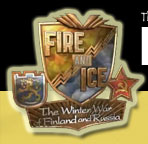

Communism
vs. Fascism
Word / PDF
ESSAY
The end of World War I brought sweeping changes to the old world order. In Western Europe, victorious Britain and France were able to impose their terms for peace and establish a new balance of power. A defeated Germany was forced to give up many of the states that made up the old German Empire. Many became independent republics.
To the east, a revolution overthrew the Russian Czar and led to a civil war inside Russia. Supporters of the Imperial regime formed the White Army and fought against a revolutionary Red Army. The victorious Red Army, led by the Bolshevik Party, formed a new Soviet Socialist Republic and proclaimed a new political and social ideology called communism. One result, however, was a loss of sovereignty and control over many states that had constituted the former Russian Empire, including Poland, Estonia, Latvia, Lithuania and Finland.
During this period, Finland declared its independence and formed a parliamentary democracy. But opposing ideological forces inside and outside of Finland led to a bloody civil war. Finland’s socialists and communists formed a military force called the Red Guards, supported by the Soviet Union. The opposing White Guards were supported by Germany. The White Guards were led to victory by a former Russian Imperial Army officer, C. G. Mannerheim. Even though Finland and the Soviet Union signed a treaty to mark the end of this conflict, suspicions and animosities lingered.
In the 1920s, Britain, France and Germany attempted to forge new alliances out of fear of the expansionist ideology of Russian Communism and around their own national interests. New tensions arose as each nation attempted to forge political cooperation and military defense treaties with the new independent republics on their borders.
In 1933, tensions in Europe escalated as a new political party took power in Germany. The National Socialists, or Nazis, led by Adolph Hitler, introduced a new totalitarian ideology of fascism based on German racial superiority and dominance. The Nazi state began to re-arm and assert claims to territory that had been lost after World War I through the Treaty of Versailles.
The balance of power established in Europe at the end of World War I began to erode. In 1938, an increasingly belligerent Germany annexed Austria and then marched into Czechoslovakia while Britain and France maintained a policy of non-intervention. In Spain, the competing ideologies of fascism and communism clashed in the Spanish Civil War. Germany and Italy supported Spanish fascists in their victory against republican forces supported by the Soviet Union.
Soviet leaders professed an ideology of militant communism. They saw tensions in Europe as a conflict between rival forms of imperialism, a consequence of their economic and social ideology of capitalism. The Soviets believed conflict among the Western powers would weaken them and allow for the inevitable spread and triumph of communism. It was one reason for the reluctance of the Western democracies to form an anti-fascist alliance with the Soviet Union.
There were other disagreements. The Soviets wanted to establish their right to intervene in the internal affairs of any country on its border if it changed policy in favor of an aggressor. The British and French were afraid this would allow the Soviets to intervene in bordering countries' internal affairs even without an immediate German threat. This led to a dead end in negotiations between the Soviet Union, France and Britain for a military alliance against Germany.
In September 1938, the British and French reacted to German threats to invade Czechoslovakia with a conference in Munich. They agreed to German demands to dismember Czechoslovakia. The Soviet Union was not invited. It fueled Soviet suspicions that the West was attempting to appease Germany as a way to divert Nazi aggression to the east, toward a possible war with Russia.
In 1939, Germany demanded the return of territory it claimed from Poland. Poland refused. The Polish government also refused to allow Soviet troops to establish military bases on its territory against the growing threat from Germany. Poland feared the Soviets might exercise their own claims to Polish territory once controlled by the Russian Empire. The end of August 1939, marked an end to negotiations. Fear and distrust grew among all parties.
The Soviets now searched for a counter-move, a way to shift the balance of power in their favor. Their gaze turned to the Baltic republics on their borders: Estonia, Latvia, Lithuania and Finland. They began negotiations for a military alliance with Britain and France. At the same time, they initiated secret negotiations with Germany’s Third Reich.
LESSON PLAN
Grade level 7-12
Time allotment 3-4 55 minute class periods
STANDARDS
World History Standards for Grades 5-12/ Era 8
National Center for History in the Schools
http://www.sscnet.ucla.edu/nchs/standards/worldera8.html
Standard 4A
The student understands the causes of World War II and is therefore
able to:
Analyze the relative importance of the legacy of World War I, the
depression, ethnic and ideological conflicts, imperialism and traditional
political or economic rivalries as underlying causes of World War
II.
OVERVIEW
In this lesson students will learn about the conflicts that brought the Soviet Union into World War II, specifically the invasion of Finland, by comparing and contrasting communism and fascism. Students will also personify and speak for countries that are identified as Allied, Axis, or neutral countries
OBJECTIVES
At the end of this lesson, students will be able to:
Compare and contrast communism, fascism, and democracy
Explain reasons for conflict in civil wars using Spain, Finland and Russia as examples
VOCABULARY
White Army
Red Army
Bolshevik Party
communism
socialists
fascism
Red Guards
White Guards
imperialism
capitalism
MATERIALS NEEDED
Photocopy of “Communism vs. Fascism” essay
(1 per student)
Poster board and markers
Classroom board
Butcher paper
INTRODUCTORY ACTIVITY
Distribute photocopies of “Communism vs. Fascism” to each student. After each student has read through the essay, divide students into three groups: Communism, Fascism, and Democracy. Using information from the essay as well as available classroom resources, each individual group will define and characterize their political and social ideology and write them on their poster board. This may take 2-3 class periods. After each group has summarized their political ideology, put the poster boards up for all students to see. On the classroom board, write the following statements, which are taken from the Declaration of Independence, the Communist Manifesto and the Fascist Manifesto (D, C, or F). In the same groups, have students raise their hands if the statement is representative of their group’s particular ideology.
Whenever any form of government becomes destructive of these ends, it is the right of the people to alter or abolish it… (D)
In this sense the theory…may be summed up in the single sentence: abolition of private property. (C)
Calls for the creation of a short-service militia with specifically defensive responsibilities. (F)
Advocates sequestration of 85 percent of all war profits by the state. (F)
Confiscation of the property of all emigrants. (C)
We hold the rest of mankind, enemies in war, in peace friend. (D)
Armaments factories are to be nationalized (F)
Expropriation of the property of religious congregations (F)
….we mutually pledge to each other our lives, our fortunes, and our sacred honor. (D)
Let the ruling class tremble at our revolution. The revolutionaries have nothing to lose but their chains. They have a world to win. (C)
DISCUSSION
Exploring a variety of documents from different political doctrines, students can begin to gain an understanding of some of the social context that led to the creation of each document. Use the following questions to develop an understanding why each of the documents was written.
What is the tone in each of the different statements?
What similarities do you notice between the statements?
What effect would these statements have on the citizens reading them?
ACTIVITY
Once students have read the essay and have worked their way through the introductory activity, divide students into five groups and have each assume the identity of one of the following World War II European countries:
Russia
France
Britain
Germany
Finland
Poland
Estonia
Spain
Italy
Czechoslovakia
Each “country” will then prepare a poster board sign indicating their country name and which political ideology they are most associated with. Each group will choose a “speaker” for their country. Around the classroom, place a piece of butcher paper with a label of “Axis Power”, “Allied Power”, or “Neutral”. Have the speakers carry their country’s poster board to the appropriate labeled section. Each group will prepare a series of questions or statements that they would like to ask other countries. The speaker will personify the country by speaking in the first person. The teacher should facilitate the country’s question and answer session by encouraging dialogue between two specific countries, such as: “Germany, what would you like to ask Russia?” Or “Poland, what would you like to say to Germany?” Allow students to agree or disagree with statements made by the responding country and defend their positions.
DISCUSSION QUESTIONS:
What ultimately led to the civil wars inside Russia, Finland and Spain?
What emotions might lead to these types of conflicts?
What role did France and Britain play in aligning with the Soviet Union or Germany?
Why were Western European countries hesitant to align with the Soviets in an anti-fascist alliance?
Why did the Soviets believe that Western European countries were trying to appease Germany?





